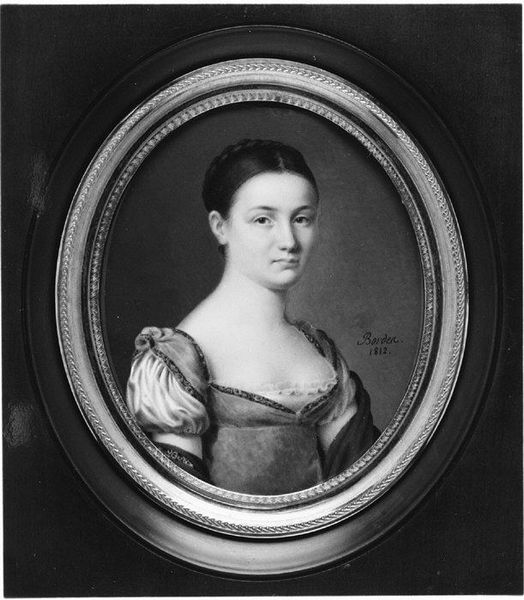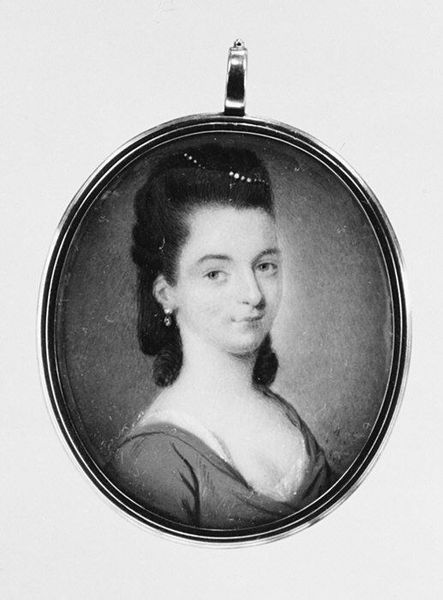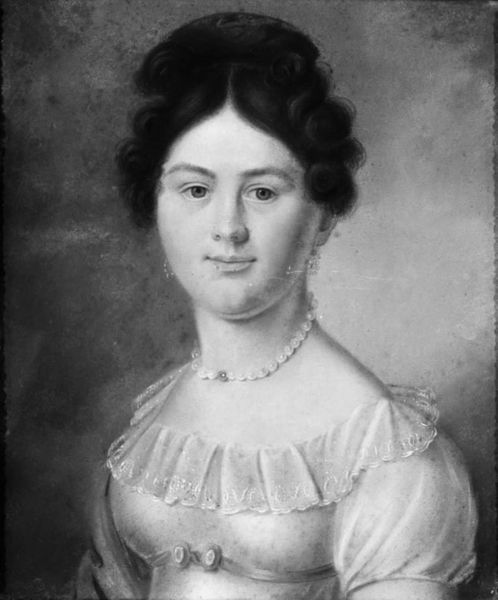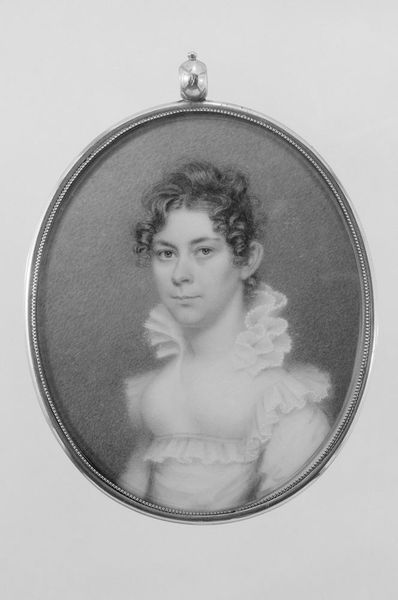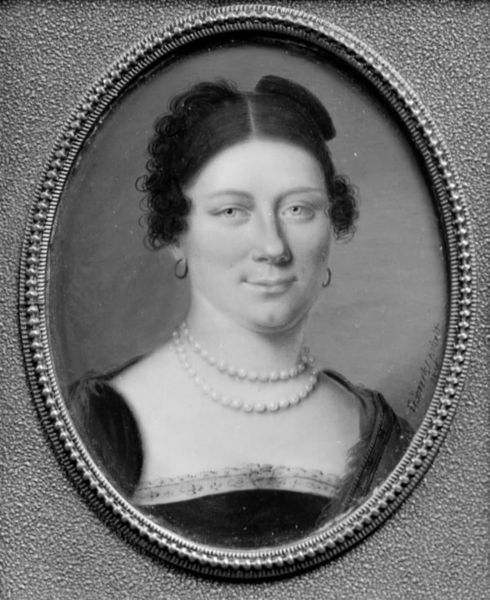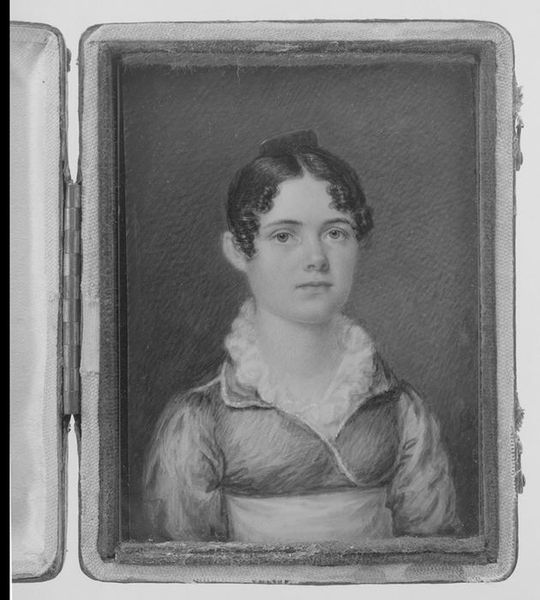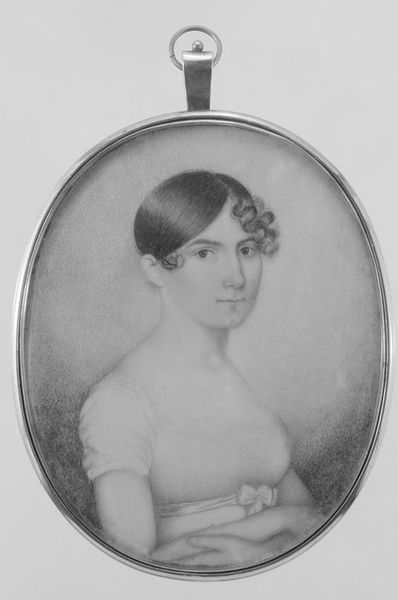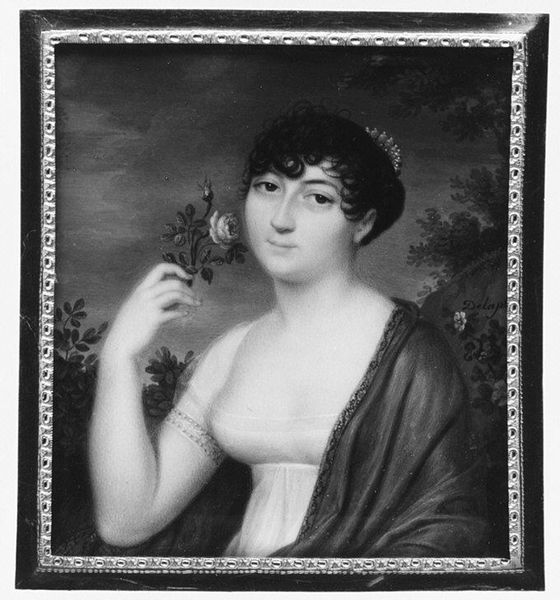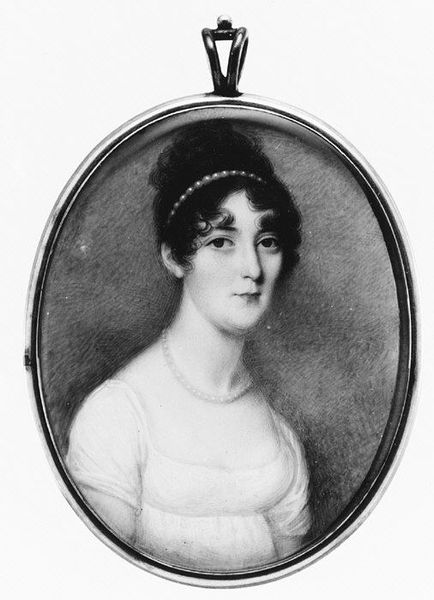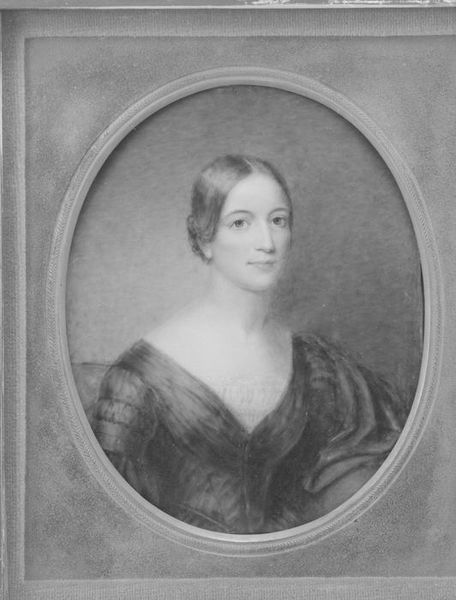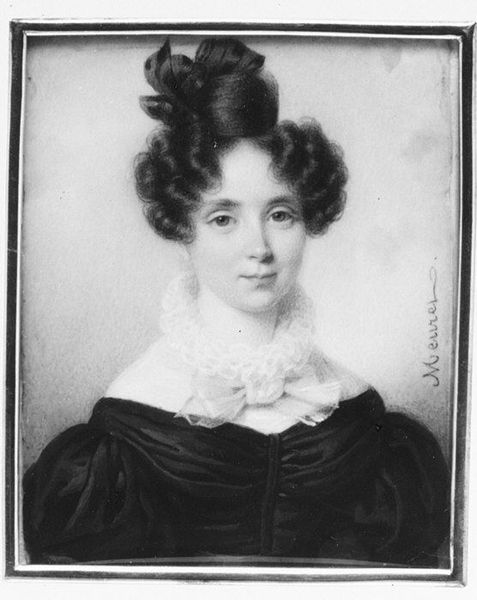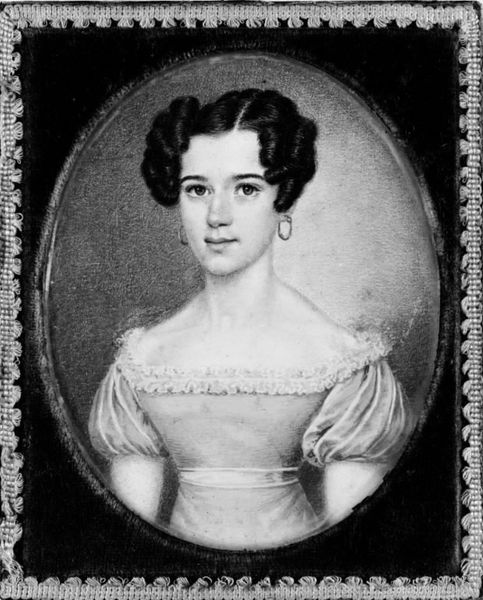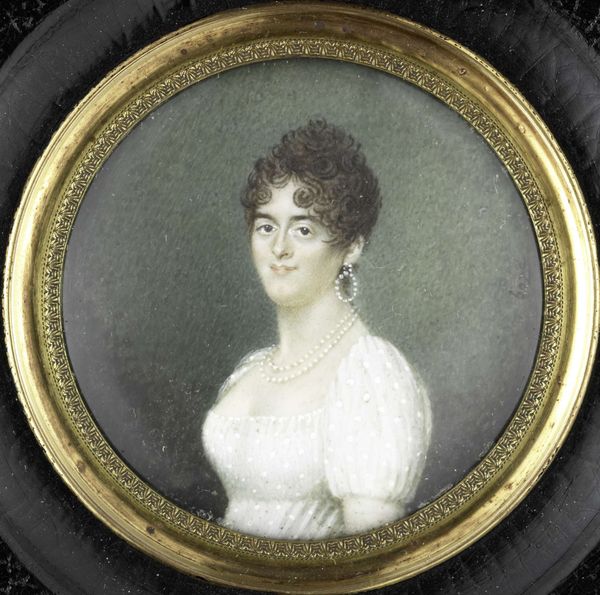
painting
#
portrait
#
neoclacissism
#
painting
#
black and white
#
academic-art
Dimensions: Octagonal, 4 1/8 x 3 1/8 in. (106 x 80 mm)
Copyright: Public Domain
Editor: This is "Portrait of a Woman," painted in 1808 by Joseph Bordes. It's a very austere portrait, painted in monochrome. It reminds me of neoclassical sculptures. How do you interpret this work? Curator: Initially, consider the structural elements. The limited palette forces us to concentrate on form and tonality. Observe how Bordes uses chiaroscuro to sculpt the figure. Where do you notice the strongest contrasts? Editor: Definitely around the face and neckline. It creates a focal point. Curator: Precisely. The rigid octagonal frame and the symmetry of the composition create a sense of balance, stability. However, do you perceive any tension or disruption to this classical harmony? Editor: Perhaps in the woman's slightly asymmetrical features or her loose, almost rebellious curls juxtaposed against the formal attire? Curator: Good observation. This slight deviation hints at the transition between the Neoclassical and Romantic periods. Bordes uses the materiality of paint itself to define light and volume. See how thinly the paint is applied in the background, versus the layered, almost textural quality around her face? What does that tell us? Editor: That detail and light were more important than conveying textures. Thank you! Curator: Indeed! We are reminded that art exists, in the end, by and for visual analysis, even as historical contexts may offer alternative frames.
Comments
No comments
Be the first to comment and join the conversation on the ultimate creative platform.
